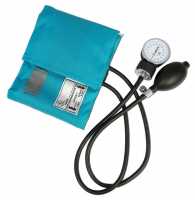MedicalResearch.com Interview with:
Dr. George Howard DPH, for the research team
Professor and Chair of Biostatistics
University of Alabama at Birmingham
MedicalResearch.com: What is the background for this study? What are the main findings?
Response: Perhaps the most important distinction to draw for the readers is that this is not a paper about risk factors for hypertension, but rather a paper that looks for contributors to the black-white
difference in the presence of hypertension. This racial difference in hypertension is the single biggest contributor to the immense disparities in cardiovascular diseases (stroke, MI, etc.) that underpin the approximate 4-year difference in black-white life expectancy. As such, this work is “going back upstream” to understand the causes that lead to blacks having a higher prevalence of hypertension than whites with hopes that changing this difference will lead to reductions in the black-white disparities in cardiovascular diseases and life expectancy. This difference in the prevalence of hypertension is immense … in our national study of people over age 45, about 50% of whites have hypertension compared to about 70% of blacks … that is HUGE. We think that changing this difference is (at least one of) the “holy grail” of disparities research.
This study demonstrates that there are several “targets” where changes could be made to reduce the black-white difference in hypertension, and thereby the black-white difference in cardiovascular diseases and life expectancy; however, the most “potent” of these appears to be diet changes. Even though we know what foods promote a heart healthy lifestyle, we still have major differences in terms of how that message is being adopted by various groups of Americans. We can’t know from our data what about the Southern diet is driving these racial differences in hypertension but we can begin to design community based interventions that could possibly help to reduce these racial disparities through diet. It is interested that diet more than being overweight was the biggest contributor to the racial disparities in hypertension. This would suggest we might want to consider interventions to increase health foods in the diet while minimizing fried foods and processed meats.
While this is not a clinical trial that “proves” that changes in diet will reduce the disparity in blood pressure, we consider the “message” of the paper to be good news, as the things that we found that contribute to this black-white difference are things that can be changed. While it is always hard for individual people to change their diet, it can be done. More importantly, over time we as a society have been changing what we eat … but we need to “double down” and try to change this faster. Also, policy changes of play a role to gently make changes in these diet, where for example Great Britain has been making policy changes to slowly remove salt from the diet. These changes are possible … and as such, we may see a day when the black-white differences in hypertension (and thereby CVD and death) may be reduced.
(more…)















